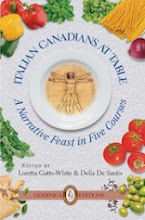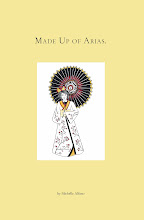On an autumn afternoon in 1993, when Filomena* finally wrenched herself free from her husband's violent beating and stumbled next door for help, she was covered with blood from the wounds inflicted to her head and face where he had bludgeoned her repeatedly. Twelve hours in an emergency room and one week in the hospital would attempt to mend the ten cuts to her head, two broken fingers and bruised shoulders and arms. As she explained what had happened to the police - the culmination of twenty eight years of domestic violence first perpetrated on a teenage girl - her husband Armando had calmly walked to his truck and drove to the local police station, covered in his wife's blood and with no surface wounds of his own, attempting to file a complaint against his wife whom he claimed had attacked him.
Filomena had done the unthinkable. This mother in her forties, with three children, had left her home and her marriage and sought assistance from COSTI, a Family Counselling Centre specializing in problems within the Italian community. She took refuge in a shelter for battered women in Aurora, ON with her youngest child. Her husband Armando had sworn when she refused to return that, "Everybody's going to regret it, the young and the old alike."
Filomena was a teenager when her future husband visited her village in the mid sixties seeking an Italian bride. He had come from Canada, having decided that Italo-Canadian girls were not Italian enough for him. Armando, ten years her senior, fixed on the shy teenager as a prospective bride. Too young to be married in a religious ceremony which the local priest had refused to perform, Armando persuaded her parents to allow a civil ceremony to be performed before she was to be taken to her new home in Canada where her parents hoped she would lead a better life than they had had as struggling farmers in Italy.
The violence began four days after her arrival, prompted by the mild compliments of a bus driver Filomena had met that day and innocently repeated to her husband. For this information, she was slapped by him on St. Clair Avenue while passersby watched but did nothing. It was the first but not the last time. Nor was Armando intimidated by those that tried to intercede in future altercations whether by family or strangers claiming that Filomena always deserved her "punishment".
As is part of a disturbing pattern described by Domenica Luongo, Chief Social Worker at COSTI, Armando's violence was directed almost exclusively towards his wife. It was not merely that he was a violent and controlling man. Here was also a man who knew that he could only justify his behavior towards his wife. As a young girl with no English skills and no relations in Canada to protect her, Filomena was completely vulnerable. Women who are geographically and socially isolated from their communities and blood relations are less likely to find shelter or protection against abusive husbands here in Canada. The safety net of the village where everyone knows your business has disappeared.
His family, now her only family in Canada, had varied responses but in general the old adage "Fra moglie and marito, non metteci un ditto" (Between wife and husband don't place a finger) prevailed. They ranged from feigned indifference to fear of Armando's violent temper to active interference by revealing her whereabouts when she left home the first time.
Her first child was two months old when she left and took refuge with one of her in-laws. She had planned to leave the country and sought legal help. She was advised that she could not take the child without the father’s consent. After her whereabouts were revealed by her in-law she returned home. If there were organizations to assist battered women in the Italian community in the late sixties, Filomena had no way of knowing.
She had never been to a hospital to treat her injuries and had never confided to her family in Italy. An anonymous letter eventually brought her mother to Canada. She too was threatened by Armando. Again legal counsel was sought and the same distressing information was conveyed. Filomena would lose custody of her first and now soon to be second child. She had been married for five years.
His behavior worsened because she had revealed his dirty secret. The mother of his children was locked in during the day to prevent her “infidelities”, was beaten sometimes not only daily but hourly for “real” and imagined transgressions and was prohibited from using the telephone. Her young children helplessly watched her be beaten and recall incidents from very young ages.
It took fifteen years but she began to fight back with fists, with feet and with any object she could lay her hands on.
“I cannot explain it,” Filomena says. “I guess I had enough. The anger was there. The willingness to [fight back] was always there.”
Shocked by her defiance Armando vowed that it would be the first and the last time that she would do so. It was not.
What brings a human being to the point where she or he will no longer be mistreated? That’s a difficult question to answer and might best be approached by examining the question of why an abused person chooses to stay in a violent situation. Lucas Forli, a social worker with COST’s Domestic Violence Program, cites three major impediments; shame, guilt and fear.
Shame: In Italian culture there is often a strong sense that women must “manage" the family and, implicitly, their husband's behavior. Loss of control and violence on his part can sometimes be construed as a failure on her part to control him and her own perceived role in “instigating” these violent outbursts. There may be a sense of shame that they have failed as wives.
Guilt: guilt and embarrassing the family, guilt about “provoking” violence, guilt for allowing themselves to be abused.
Fear: fear of further violence, of being shunned by family members, of financial dependency and the disintegration of the family. In a culture that desperately clings to the ideal of the family, this last may be the strongest of all.
So she remains. Better the devil she knows than the one she doesn’t, she may sometimes say to herself.
There is no single face to these women. They are young and old, affluent and working class, childless and with many children. However, there is an emerging profile of families in which domestic abuse occurs. According to Forli, there is often a lack of ability on the part of women to develop a strong sense of self. There is a great deal of rigidity regarding gender roles and a sense that power and authority does, and should, reside with the male.
COSTI services 500-600 Italian Canadian yearly. Many of the issues brought to the staff involve domestic violence. This is, of course, a very small portion of the estimated populace of 500,000 in Toronto. There is no statistical difference in domestic violence in Italian-Canadian families versus other Canadians. But think of the sense of secrecy and shame in the community where many of us know at least one family member or paesana who did not have the resources or support to leave an abusive situation. How many Filomenas will step forward and share their stories?
Filomena is finally free after almost three decades of abuse with only a permanent restraining order to protect her. Armando served less than a year in jail after pleading guilty to this final episode of violence. Filomena shares these thoughts for young women in violent relationships: “No matter how long you wait, it doesn’t change things. The first time he touches you it’s the end. It’s like a green light saying, 'I can do this forever.' The statistical information that COSTI receives confirms this. The only factor which alters an abusive partner’s behavior is being charged and convicted.
*The names of the principals involved in the domestic violence have been changed. Initially published in eyetalian, many moons ago in the 1990s.










No comments:
Post a Comment